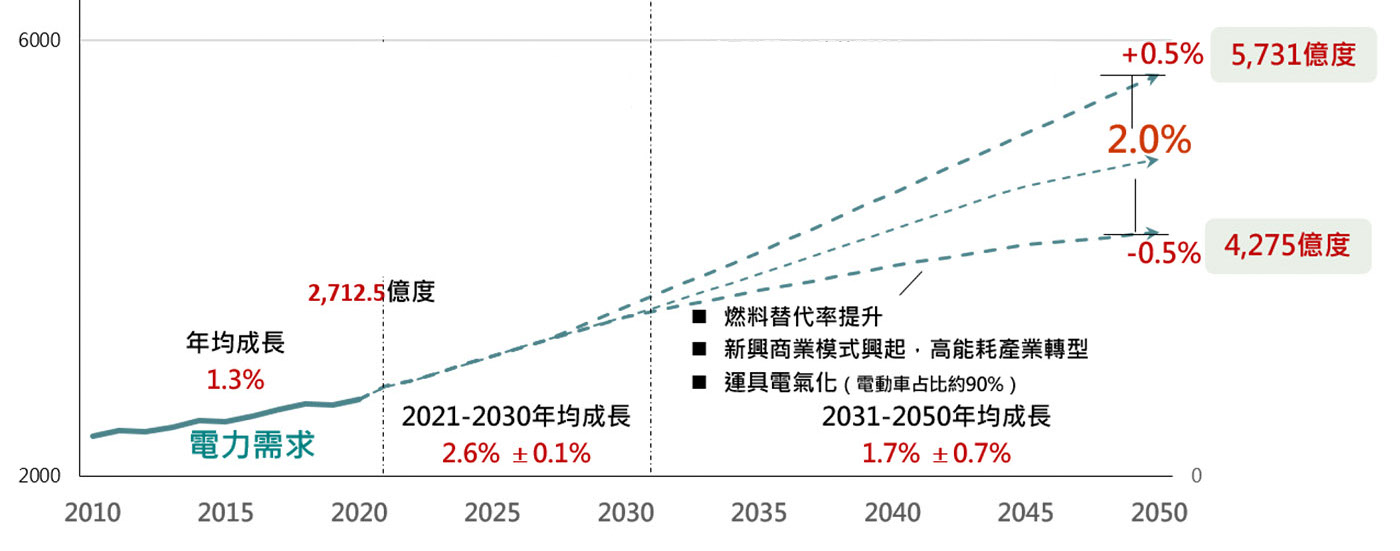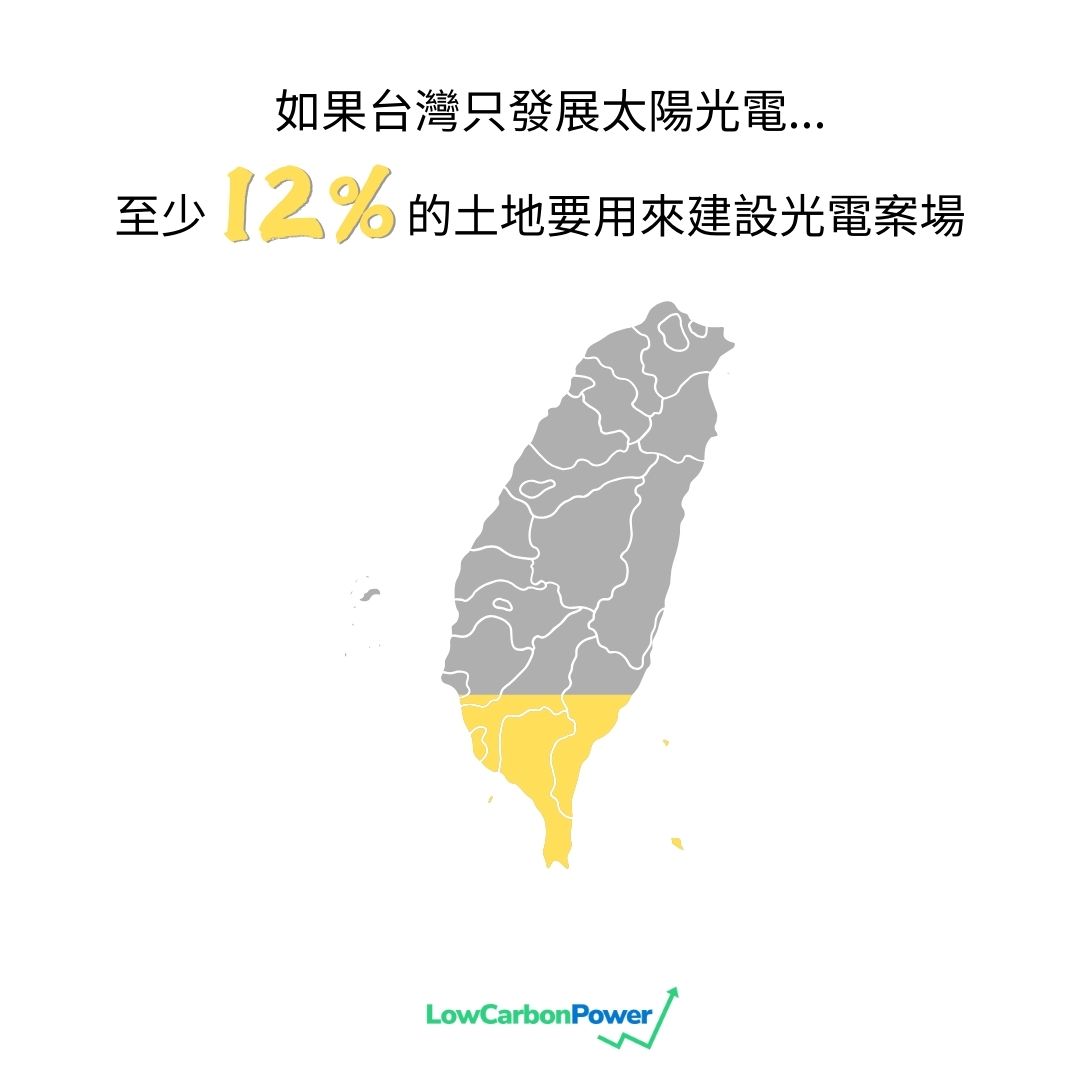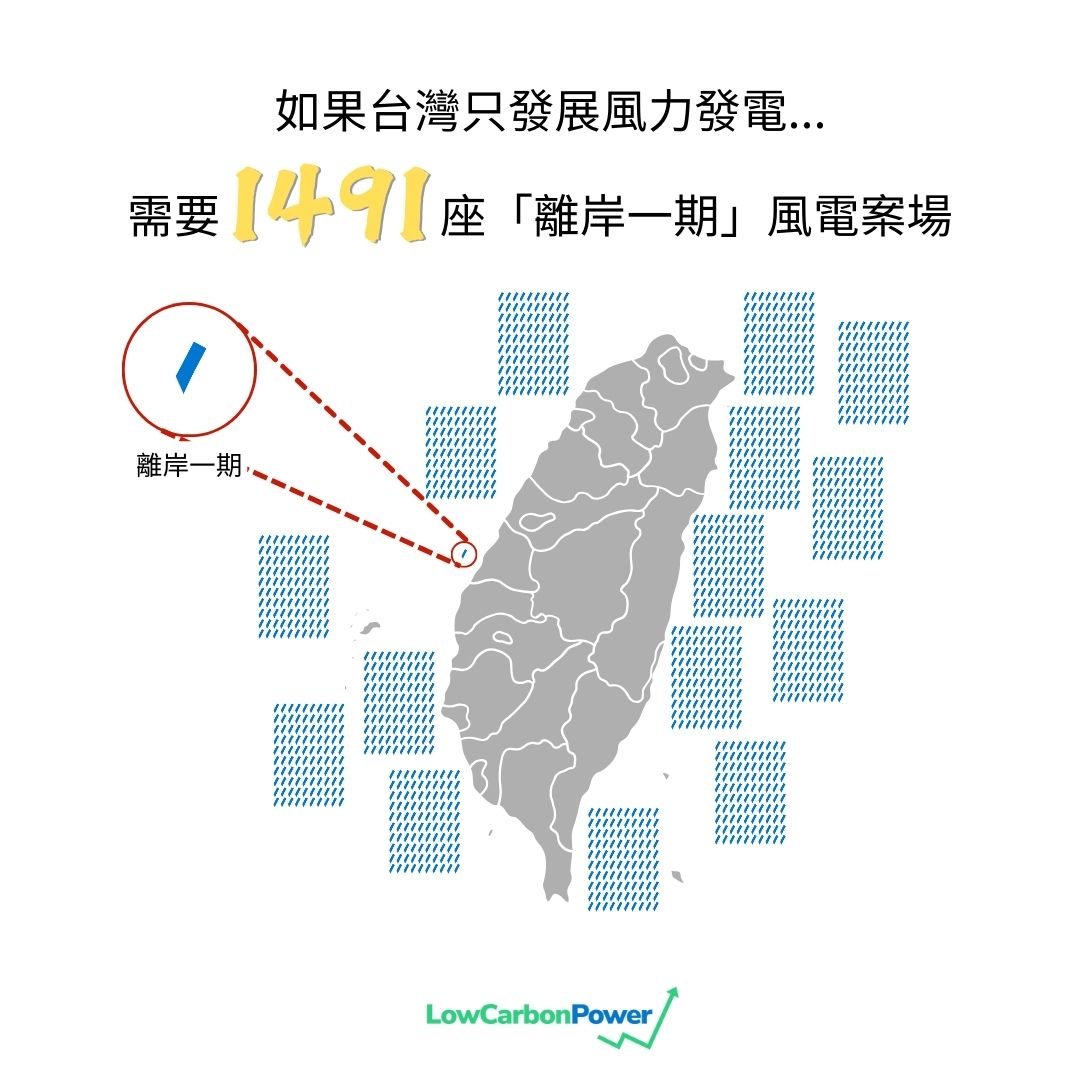To Achieve Carbon-Free Electricity, Taiwan Must Increase Clean Power Tenfold!
To Achieve Carbon-Free Electricity, Taiwan Must Increase Clean Power Tenfold!
With winters becoming milder, summers hotter, and natural disasters occurring more frequently, climate change has long ceased to be a debate. The world must find ways to reduce carbon emissions, and Taiwan is no exception. The government has set the goal of reaching net-zero emissions by 2050, with one key strategy being the complete decarbonization of electricity. This means that in the future, all electricity generated in Taiwan should be carbon-free.
Taiwan is expected to continue its development, and electrification in transportation and industry will further increase electricity demand. According to data from the National Development Council, Taiwan’s electricity demand is projected to be 427.5 to 573.1 TWh by 2050 (compared to 288.1 TWh in 2022).

Given the projected doubling of electricity consumption, achieving full carbon-free power—or the target of 100% clean electricity by 2050—requires a substantial increase in clean power. In 2022, Taiwan generated only 50.66 TWh of clean electricity. For the lowest forecast of 427.5 TWh by 2050, clean power needs to rise 8.4 times (427.5 / 50.66), while the highest forecast calls for an 11.3-fold increase (573.1 / 50.66). Simplifying these predictions, it’s safe to say clean power must grow tenfold.
How to Achieve the Tenfold Increase in Clean Power?
While future efficiency improvements in various technologies are likely, we can estimate the current production capabilities of different clean energy sources to understand how much more will be needed to meet the tenfold increase in demand. More complex technologies like carbon capture and storage aren’t considered here for simplification.
If solely dependent on solar energy, it would need to increase 42.3 times. This estimate suggests using 12% of Taiwan’s land for solar installations.

If relying entirely on nuclear power, nuclear generation must rise by 19.6 times, equating to the construction of 28 additional Third Nuclear Power Plants.

For offshore wind turbines to meet this demand, an additional 31,304 turbines are needed, which is equivalent to 1,491 "First Offshore Phase" installations.

Faced with such a monumental target of increasing clean power tenfold, Taiwan must embrace multiple technologies: solar, nuclear, and wind are all necessary.
Method of Calculation
Solar Energy
In 2022, Taiwan’s solar power generation was 10.675 TWh. By 2050, the total clean electricity required is projected to be 491.332 TWh. Assuming other forms of clean energy remain constant (50.66 - 10.675 = 39.985 TWh), the additional solar power required would be 491.332 - 39.985 = 451.347 TWh. This represents a 42.3-fold increase in solar power (451.347 / 10.675).
Using the "Tainan Salt Fields" solar power plant as an example, its 214-hectare area generated approximately 0.221 TWh in 2022, averaging 0.001 crore TWh per hectare annually. Therefore, by 2050, Taiwan would need an additional solar field area of 451.347 / 0.0010327102803738 ≈ 437,051 hectares. As per this forecast, the total solar field area in Taiwan by 2050 would be 437,051 + 10,337 (estimated 2022 solar field area) = 447,388 hectares, meaning approximately 12.36% (447,388 / 3,619,700 ≈ 0.1236) of Taiwan's land would be dedicated to solar power.
Nuclear Energy
In 2022, Taiwan’s nuclear power generation was 23.755 TWh. By 2050, the required total clean power is predicted to be 491.332 TWh. Assuming other forms of clean energy remain constant (50.66 - 23.755 = 26.905 TWh), the additional nuclear power needed would be 491.332 - 26.905 = 464.427 TWh. This indicates a 19.6-fold increase in nuclear power (464.427 / 23.755).
The "Third Nuclear Power Plant" in 2022 generated approximately 15.997 TWh. Therefore, by 2050, 464.427/15.997 = 29 additional plants of similar size would be required, or 28 newly constructed ones.
Wind Power
In 2022, Taiwan’s wind power generation was 3.543 TWh. By 2050, the total clean electricity required is projected to be 491.332 TWh. Assuming other forms of clean energy remain constant (50.66 - 3.543 = 47.117 TWh), the additional wind power needed would be 491.332 - 47.117 = 444.215 TWh. This amounts to a 125.4-fold increase in wind power (444.215 / 3.543).
For the "First Offshore Phase" as an example, the wind farm has 21 turbines and generated about 0.298 TWh in 2022, averaging 0.0142 TWh per turbine annually. Thus, by 2050, an additional (444.215-3.543)/0.0141904761904762=31,054 turbines would be needed.
